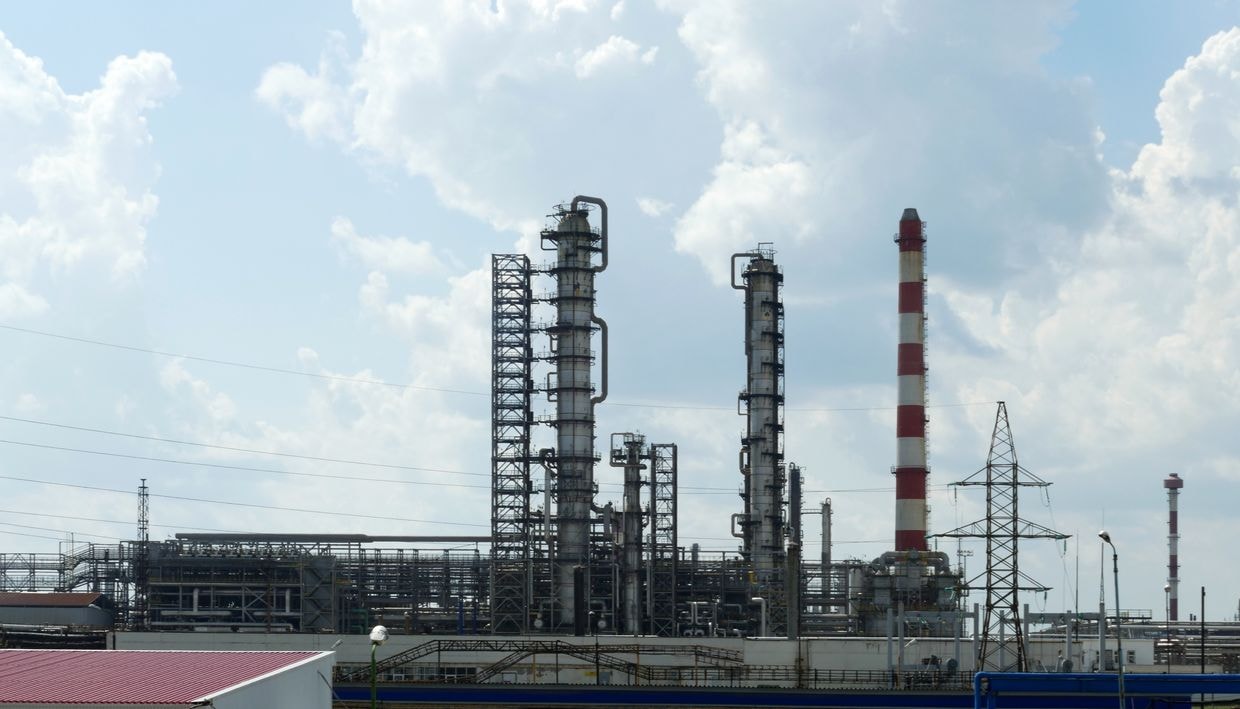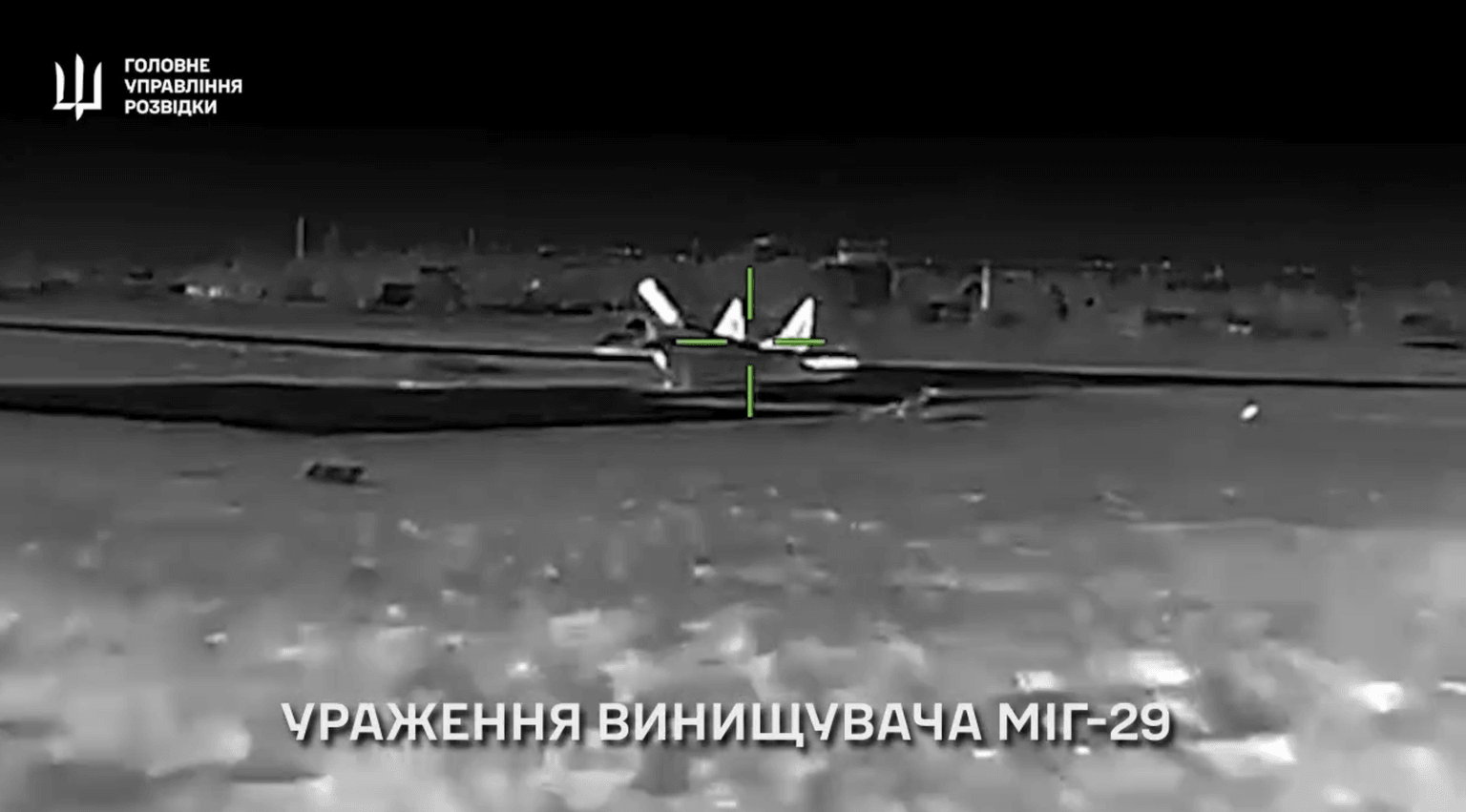
3 lessons from Minsk II for the US in a future Russia-Ukraine peace deal
Minsk II paved the way for Russia’s full-scale invasion — another weak deal today will invite an even bigger war.
(L-R) Ukrainian President Volodymyr Zelensky, then-German Chancellor Angela Merkel, French President Emmanuel Macron, and Russian President Vladimir Putin attend a press conference after a summit on Ukraine in Paris, France, on Dec. 9, 2019. (Charles Platiau/POOL/AFP via Getty Images)
The following op-ed is based on a broader report by the Institute for the Study of War (ISW), published on Feb. 11, 2025.
Some peace deals lead to peace; others lead to more war. The Minsk II deal, aimed at ending Russia’s initial invasion of Ukraine in 2014, instead laid the groundwork for Russia’s full-scale invasion in 2022. The United States must learn from the Minsk deal or risk a direct Russia-NATO conflict that puts American lives at risk.
Minsk II was a weak deal. It demanded nothing of the invader — Russia. It reinforced the Kremlin’s aggressive worldview that had driven the conflict to begin with, masking Russia’s military weakness. It gave the Kremlin time and space to prepare for a larger invasion. The West could have helped Ukraine reach a stronger deal in 2015.
Minsk II gave Russian President Vladimir Putin hope that he could win in Ukraine without war. Russia sought and failed to control Ukraine in 2014 through military means. Minsk II gave Putin a way to demand that Ukraine — a sovereign state — cede control over its internal policies. When that failed, Putin turned to the full-scale invasion in 2022.
Minsk II helped Putin mask his demands for Ukraine’s surrender behind false calls for peace. The West has repeatedly failed to confront and counter the real Russian demands since 2014. Minsk II reinforced Western delusions that Putin might settle if he received some land or if the West scaled back support for Ukraine or tried harder to negotiate with him. The deal also provided an excuse for those who understood the Kremlin’s goals but still sought to restore ties with Russia.
Vladislav Surkov, Putin’s close adviser in 2014, said in 2024 that Minsk II “legitimized the first partition of Ukraine.” Surkov’s words confirm Russia’s goal to destroy Ukraine as a state and use the Minsk deal to achieve that. He added that “peace is nothing more than the continuation of war by other means.”
Another weak deal today would validate Putin’s 2022 invasion and give him hope of gaining more over time. Hope for Putin means more war. More war means a larger conflict: A Russia absolved of any cost for its invasion will want more and rebuild its ability to do so. A larger war would raise costs for the U.S., put American lives at risk, and escalate the conflict to catastrophic levels.
The Trump administration has a historic opportunity to break Russia’s cycle of overt war and war by “peace” in Ukraine. To do so, the U.S. must learn the lessons from the Minsk deal.
Lesson 1:
Russia will seek to transfer the responsibility for its war onto someone else’s balance sheet. The U.S. should make Russia own the problem it created.
Russia will aim to shift the blame for and cost of its war of choice in Ukraine, as it did with the Minsk II deal. The Kremlin will blame the U.S., NATO, Ukraine, Ukrainian President Volodymyr Zelensky, the Western defense industrial complex, Anglo-Saxons with their “aggressive intentions,” as the Russian Foreign Ministry puts it, and others.
Russia will attempt to offload the cost of the destruction it caused in Ukraine onto someone else’s balance sheet — be it Ukraine, the U.S., or other Ukrainian partners.
The starting U.S. position should be that Russia owns the problem it created. Anything less than a demand for Russia to foot the trillion-dollar bill for the damage it caused and to restore the borders of Ukraine that Russia formally recognized in 1991 and 1994 should be framed as a major concession to Putin. Negotiations that start with preemptive concessions on these demands, without insisting on parallel Russian concessions, would repeat the central mistake of the Minsk deal.
The U.S. must make Russia own the problem it created, both for the sake of a just peace and out of pure pragmatism. There is no reason someone else should cover the bill for Russia’s war. Russia’s war of choice killed and wounded an estimated million people. Russia caused an estimated half a trillion to a trillion dollars in damage to Ukraine and billions to the U.S. and other partner nations. Russia robbed three — and in some cases, 11 — years from the lives of Ukrainians. Russia cost countless hours and energy from people in the U.S. and globally working to end Russia’s war.
Russia chose to start this war for no legitimate reason, and it can choose to end it at any point. Ukraine did not pose a threat to Russia. Putin thought Ukraine was so militarily weak that he could conquer it in a matter of days in 2022. Russia was not seriously concerned with a military threat from NATO, as evidenced by Russia’s military posture for years before 2022 and even during its war in Ukraine.
Putin had effectively blocked Ukraine’s NATO accession by 2022. Putin did not invade to protect Russian speakers in Ukraine — Russian forces are killing Russian speakers at scale in Ukraine. There were no legitimate “casus belli” — only Putin’s desire to control Ukraine. Russia can stop its war at any point. Russian troops can simply withdraw from Ukraine. Russia will still exist as a state without Ukraine.
Another deal that absolves Russia will lead to a larger war with higher costs for the U.S. A deal that lets Russia keep its illegal gains in Ukraine at no cost will reinforce the mindset that drove Russia to invade, bringing close to zero the chances of a Russia compatible with U.S. interests, Ukraine’s existence, and a peaceful Europe.
Minsk 3.0 would create a Russia that will want even more and will be able to do more. The Russia of 2025 is not the Russia of 2022. Russia in 2022 was expansionist enough to attack its neighbor without provocation and kill thousands — only to fail to achieve its declared war aims three years later.

Putin has transformed Russian society to support military conquest over three years of war. He has empowered Russian ultranationalists who believe in expansion by force. Putin has promoted these ultranationalists to prominent positions within Russia. Russian ultranationalists are inherently anti-American. They see Russia as being at war with the U.S.-led collective West for the new world order. They are committed to sustaining the war indefinitely and advocate for the permanent mobilization of the Russian people and the means to fight the West.
The U.S. would not only face a stronger Putin or Putinist regime (or worse) but a stronger, battle-forged Russian military that is experienced in fighting a NATO-supplied adversary, has a better starting position on the battlefield compared to February 2022, and has stronger ties with China, Iran, and North Korea.
Putin is hardly eager to return over half a million violent Russian men deployed to Ukraine back to Russia. He will likely seek to redirect their energy elsewhere if the lines in Ukraine are frozen with no constraints on Russian forces or the Kremlin’s choices.
If an emboldened and more capable Russia invades Ukraine to complete the conquest, it will cost more Ukrainian lives and very likely bring the Russian military closer to NATO borders, increasing the risk of a direct NATO-Russia conflict. The U.S. risks a larger war with higher costs and higher escalation risks on conditions that favor Russia.
The only way to break the vicious cycle of Russian wars is not to absolve Russia of responsibility and force Russia to own the problem it created.
Lesson 2:
Ending the war requires stripping Putin of the hope that he can achieve his goal of destroying Ukraine as a state in his lifetime — militarily or through a "peace deal."
The Kremlin will falsely insist that Ukraine is not sovereign. Russia will try to make a deal directly with the U.S. (if Putin considers a deal at all). The Kremlin will falsely insist that Zelensky is not legitimate and demand that Ukraine hold elections that violate its constitution.
Putin will embed provisions to destroy Ukraine’s sovereignty into any deal. Putin has already laid out preconditions and poison pills for even sitting down at the table. He is demanding limits on Ukraine’s freedom to choose its partners and Ukraine’s ability to defend itself (e.g., demanding that Ukraine limit the size of its military).
Putin’s demands are proxies for Russia’s actual goals: controlling Ukraine and having the U.S. and NATO cede their principles and interests to accommodate a world order that favors Russia.
Russia’s negotiators will engineer ways to control the physical enforcement mechanism in any deal. The Kremlin needs to preserve options to escalate the war at will. Putin will try to do what he tried (and failed) to do via Minsk II — legitimize the Kremlin’s invasion without any security guarantees to Ukraine.
Putin’s individual demands — territory, neutrality, elections, and others — are irrelevant. Putin’s demands are proxies for Russia’s actual goals: controlling Ukraine and having the U.S. and NATO cede their principles and interests to accommodate a world order that favors Russia. The U.S. should deprive Putin of the hope that he can achieve either. This war can only end when Russia knows it cannot win militarily or through another “peace” deal.

The U.S. should focus on conditions compatible with Ukraine’s sovereignty and U.S. interests — rather than discussing lines on the map. The U.S. should reject direct U.S.-Russia talks or Putin’s demands regarding Ukraine’s domestic affairs, including elections, or any other demand that limits Ukraine’s sovereignty. Conceding to Putin’s demands before talks would be a self-imposed failure.
Any deal that gives Putin hope to control Ukraine will fail, as Minsk did. A deal that does not give Putin hope to control Ukraine is not a deal that Putin will accept — unless this deal is imposed on him through a battlefield defeat, a severe degradation of Russian military capability, or a credible deterrent.
A deterrent that has a chance to deter Russia requires a capable military force immune to Western political cycles and Russian influence. That is a tall order. Anything short of that, however, will not be viewed as a deterrent by Russia, will be co-opted by Russia, and will lead to another war. A UN-brokered enforcement mechanism is a non-starter, for example, because of Russia’s veto power in the UN Security Council.
A credible deterrent is impossible without a strong defense industrial base (DIB) in the West and Ukraine. The West’s weak DIB gives Putin hope. The Kremlin has exploited the fact that Europe’s DIB could not surge in support of Ukraine and that the U.S. could have but lacked the will to fill the void. A state’s DIB is a proxy for its will. Depriving Putin of hope to subjugate Ukraine in his lifetime requires a strong Western and Ukrainian DIB able to alter the assumptions of Russian military planning.
Lesson 3:
Russia can accept failure.
Putin will try to convince U.S. leaders that making him accept less than his goals in Ukraine is a non-starter. He will try to convince the U.S. that this war is unwinnable or that U.S. support will not matter, will only prolong the war, or is too risky. Russia will draw the next set of red lines.
Putin can be made to accept a loss without escalating. He settled for less than his aims in Ukraine in 2014 and in 2022. Ukraine defeated Russia at the Battle of Kyiv and expelled Russian forces from critical terrain in Ukraine in 2022. Russian authorities claimed Russia would be in Kherson “forever,” but they withdrew in 2022. Putin was forced to accept Ukraine’s incursion in Russia’s Kursk Oblast in 2024 — the first invasion of Russia since World War II. Putin reportedly ordered the Russian forces to liberate Kursk by October 2024 — a mission failure as of February 2025.
Russia’s decade of gains in Syria is at risk. Russian military basing and political influence in Syria were key to Russia’s power in the Middle East, Mediterranean, and Africa, a pillar of its cooperation with Iran, and a way to contest the U.S. and pressure NATO’s southern flank. A decade of Putin’s work is at the mercy of HTS — militants whom Russia used to call terrorists but can no longer because HTS holds Moscow at its mercy. Each time Putin accepted a setback, the new reality was not “negotiated” with Putin—it was imposed on him by force. The U.S. will eventually recognize that the only way to have Russia accept a deal is to impose one on Russia.
The U.S. should not distract itself by providing Putin an “offramp.” Putin has an offramp — the Kremlin’s control of Russia’s information space. The Kremlin reframed or downplayed Putin's humiliating setbacks — from Russia’s retreat from Kherson to Wagner Group financier Yevgeny Prigozhin’s mutiny to the degradation and expulsion of the Black Sea fleet from Crimea, and countless others. This information control allowed Putin to normalize a new and worse reality in Russia each time, including softening the blow for an estimated 800,000 Russian casualties in pursuit of arguably mediocre battlefield results in Ukraine.

Putin and Russia have failed before. There is no compelling reason why Putin should not be made to fail again. And if the information offramp eventually fails him, that is not the U.S.’ problem.
Putin is not invulnerable. This war is not lost, despite Russia’s increased but still modest gains in eastern Ukraine. While Russia has well-documented advantages, Putin is also accumulating risks and costs. His military faces material and manpower shortages, ongoing issues with force generation, and economic strains — including inflation, labor shortages, the erosion of Russia’s sovereign wealth fund, and increasingly costly trade-offs between funneling limited manpower to the frontlines or shoring up the economy. Russia also depends on partners to sustain its war effort, and shifting U.S. policies toward China and Iran are putting those enabling relationships at risk.
None of this will matter, however, if a Trump administration gifts Russia the time and space to regroup — just as the Biden administration’s incremental approach has allowed Putin to in the past.
As Minsk II helped obscure Russian failures in 2015, a premature deal now risks letting Putin off the hook before he faces hard choices and mounting pressures — before Ukraine and the U.S. attain a true position of strength.
The Kremlin will face mounting costs if the U.S. and its partners apply maximum pressure — something they have yet to do since Putin’s full-scale invasion in 2022. Washington still has many underutilized tools to ratchet up pressure on Russia, from striking harder at its energy sector to targeting the Kremlin across multiple theaters and domains.
But the most effective driver of Russia’s economic losses remains its sustained battlefield defeats. Maximum pressure on Russia is impossible without U.S. military support for Ukraine. The U.S. and its partners must ensure the Kremlin faces compounding pressure — on the battlefield and beyond — without easy ways to offset it.
Editor’s Note: The opinions expressed in the op-ed section are those of the authors and do not necessarily reflect the views of the Kyiv Independent.










